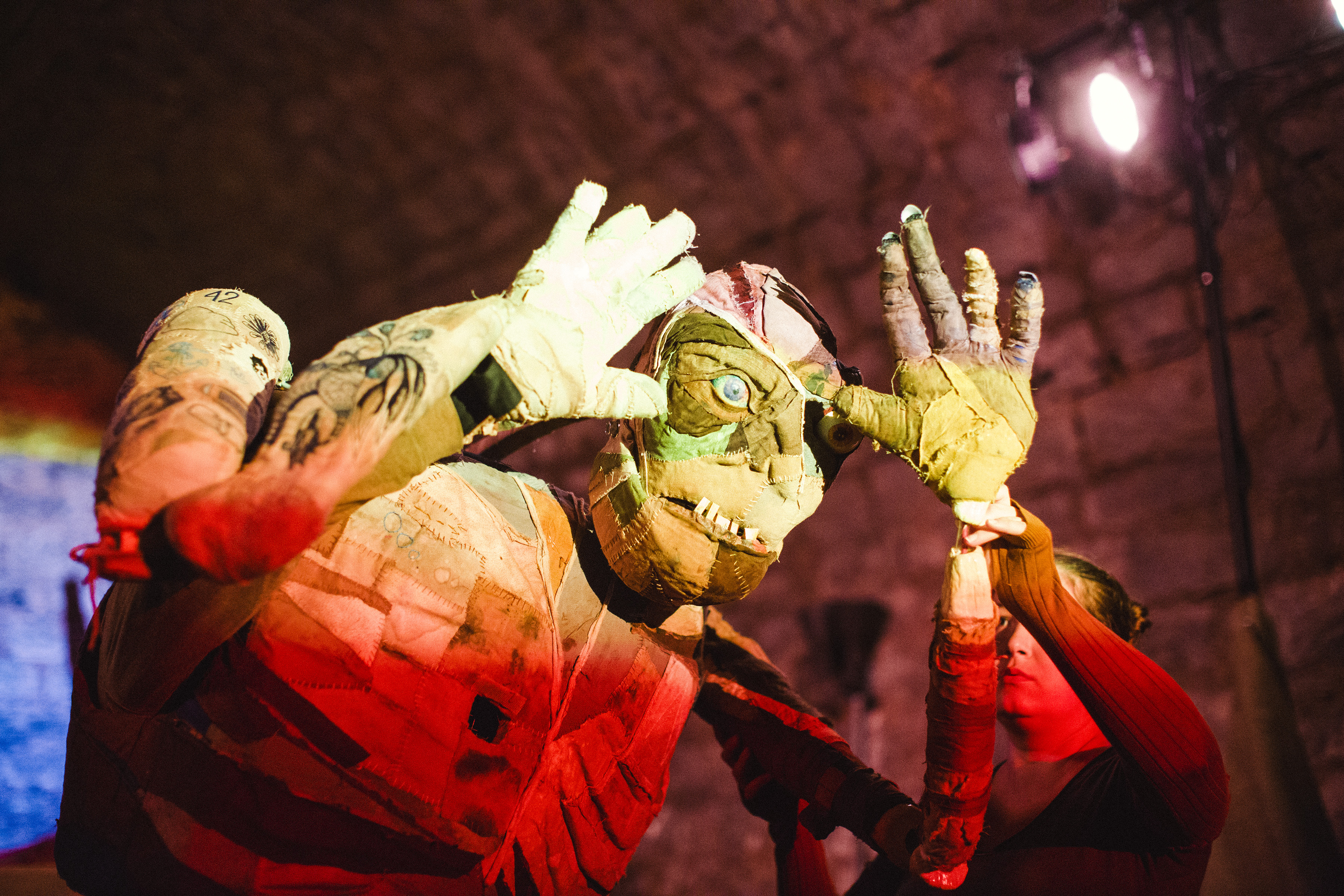
In the 200 years since Mary Shelley wrote
Frankenstein, popular adaptations—in particular, the 1931 film starring a shuffling, moaning Boris Karloff with bolts sticking out of his neck—have altered our collective perception of Dr. Frankenstein’s original creation.
So when Zach Bramel ’98 decided to write a play to mark the novel’s bicentennial, he set about restoring the monster’s intelligence. “We wanted to clear up some of those misconceptions about the creature—that it was dumb, brutish, green,” he says. “That it was non-verbal. The show is mostly non-verbal, but when we do let it speak, as it does in the novel, it’s eloquent.”
And in Creature, it’s a 7-foot-tall modified body puppet inhabited by Bramel. “My legs are Creature’s legs and the torso encapsulates my upper body. My left hand is up over my head in its head, and my right arm is Creature’s right arm.” A second puppeteer manipulates Creature’s left arm, which becomes almost a second character.
The title Creature was fabricated by master builder Deva North, who also created every puppet in the supporting cast, none of which is more than 3 feet tall. “We are playing with the idea of scale, and puppetry allows that,” Bramel says.
Bramel, who majored in English, did some theater at Bellarmine and worked with Kentucky Shakespeare Festival and Bunbury Theater after graduation, but it was his wife, Carrie Christensen, a founding member of the Squallis Puppeteers, who introduced him to puppetry. “Once I was exposed to it, I identified it as the way I wanted to tell my stories.”
Although he was the playwright for Creature, “I use that term loosely,” Bramel said, “because the show is largely wordless. I’m trying to capture moments and feelings, rather than a narrative arc. It’s relatively unconventional.” The moments are woven together by music written by Axel Cooper and performed live (amplified rock music, along with violence both implied and explicit, is why the 50-minute play is recommended for adults and “brave children ages 8 and up”).
Why does Frankenstein, published in 1818, still resonate? “At the end of the day, the Creature does make choices that define it as a monster, and that monster is the beginning of the modern monster. It has influenced nearly everything that has come since,” Bramel said.
“It resonates, too, because it’s so ambiguous and open-ended. It leaves room for interpretation for each viewer. The Creature can represent whatever the viewer brings to it—environmental degradation, social injustice, intolerance—whatever fear you want to hang on the monster, it can be your scapegoat.”
But a deep vein of empathy also runs through this story of a lonely, alienated being.
“We called it the Creature, rather than the Monster,” Bramel said, “because it’s more often referred to as Creature in the novel, and that also connotes the idea of a creator. You can’t have a creation without a creator—in this case, a father figure that won’t admit love to, or even acknowledge, the thing he has created.”
Creature: A Puppet Frankenstein Adaptation
Nov. 2, 3 and 9 at 7 p.m. and 9 p.m. and Nov. 10 at 4 p.m. and 7 p.m.
Suspend, 721 E. Washington St., Louisville
Tickets: $18 ($15 for 4 p.m. matinee)